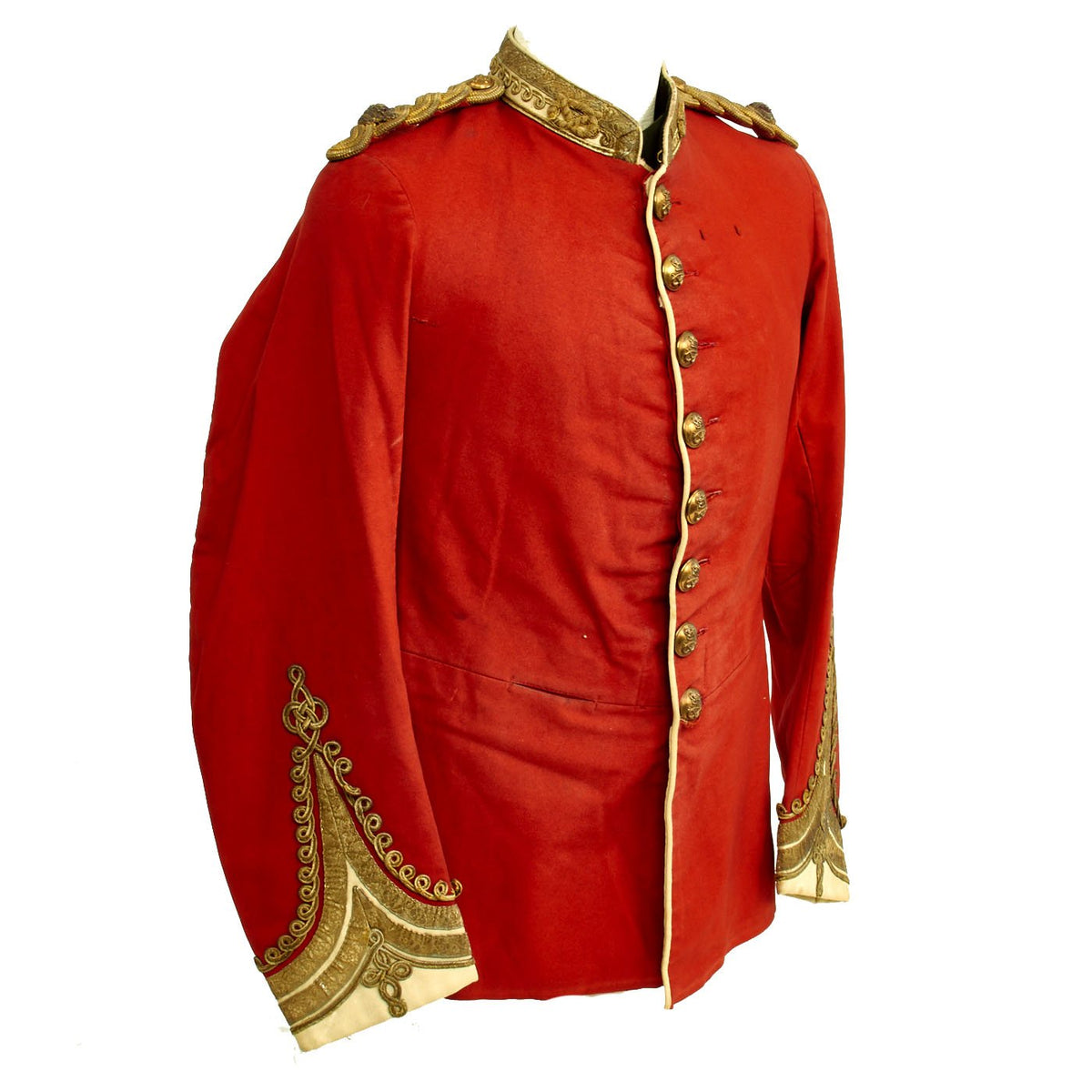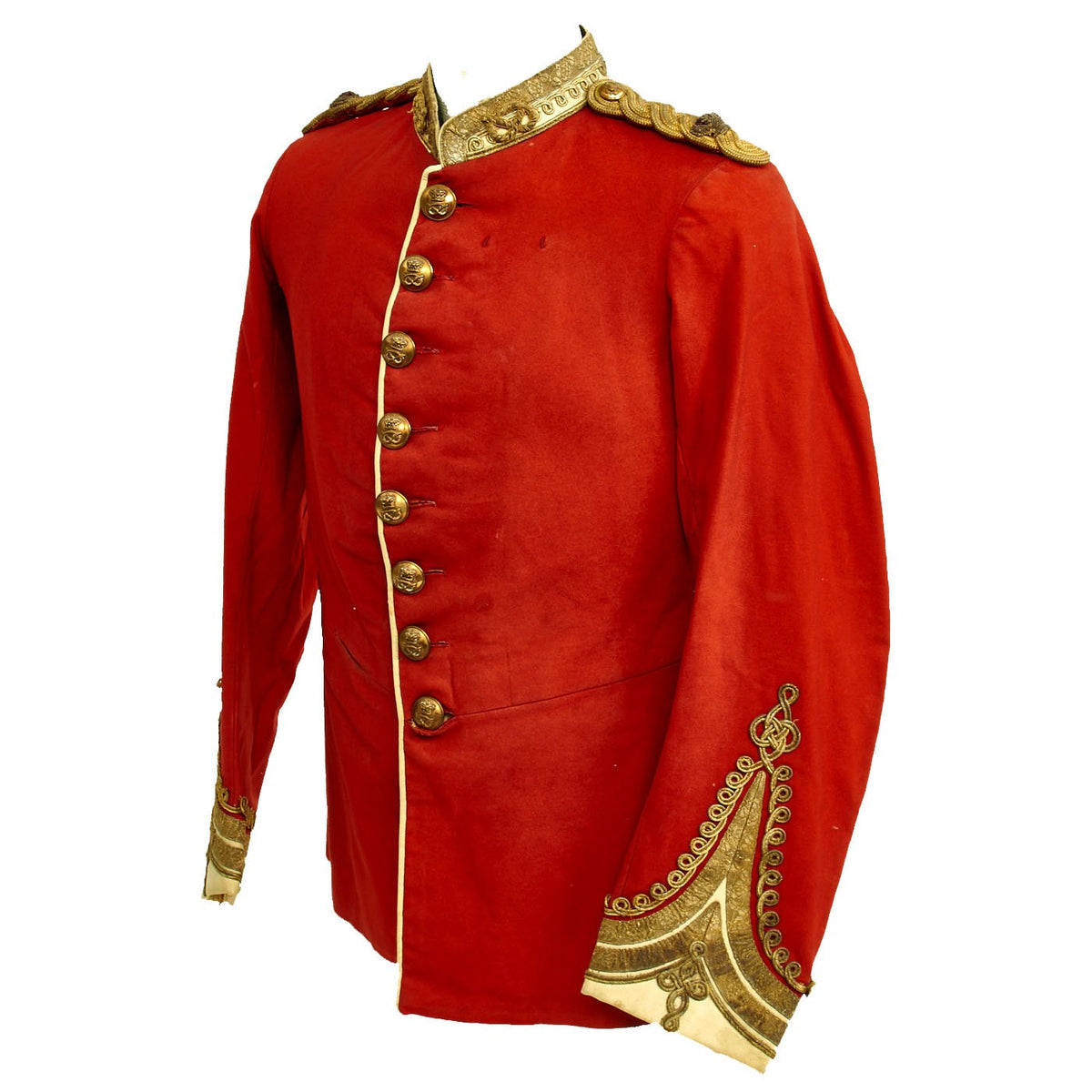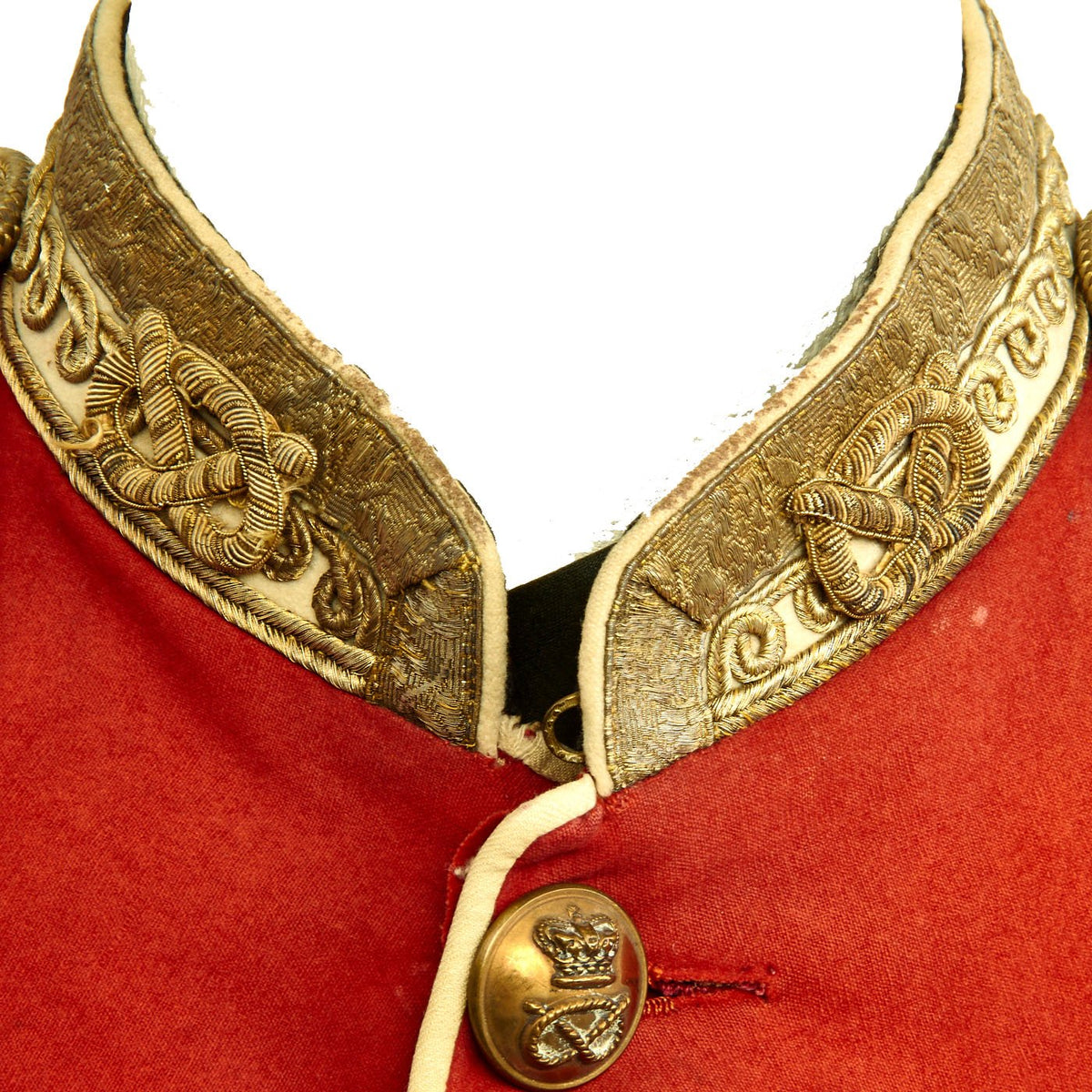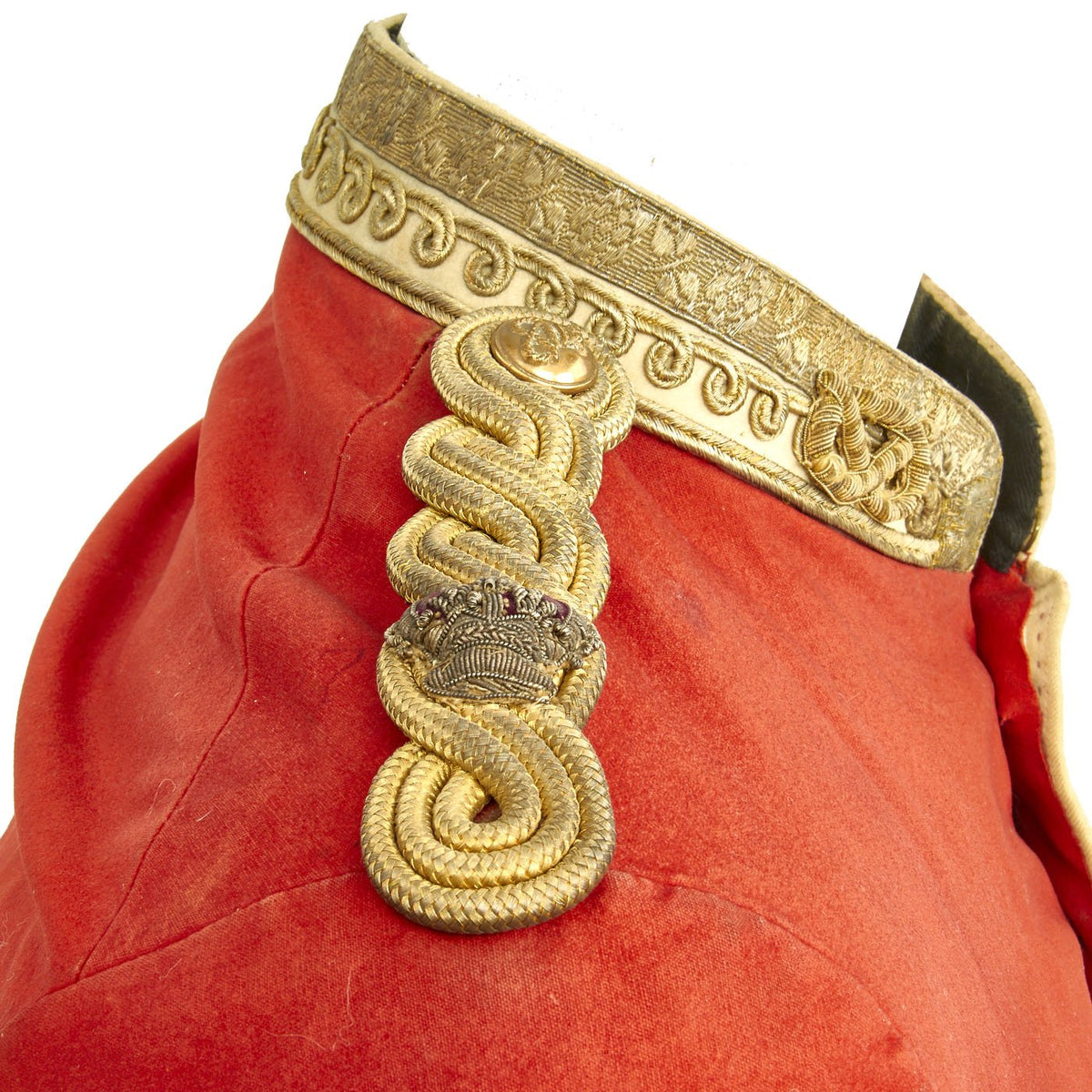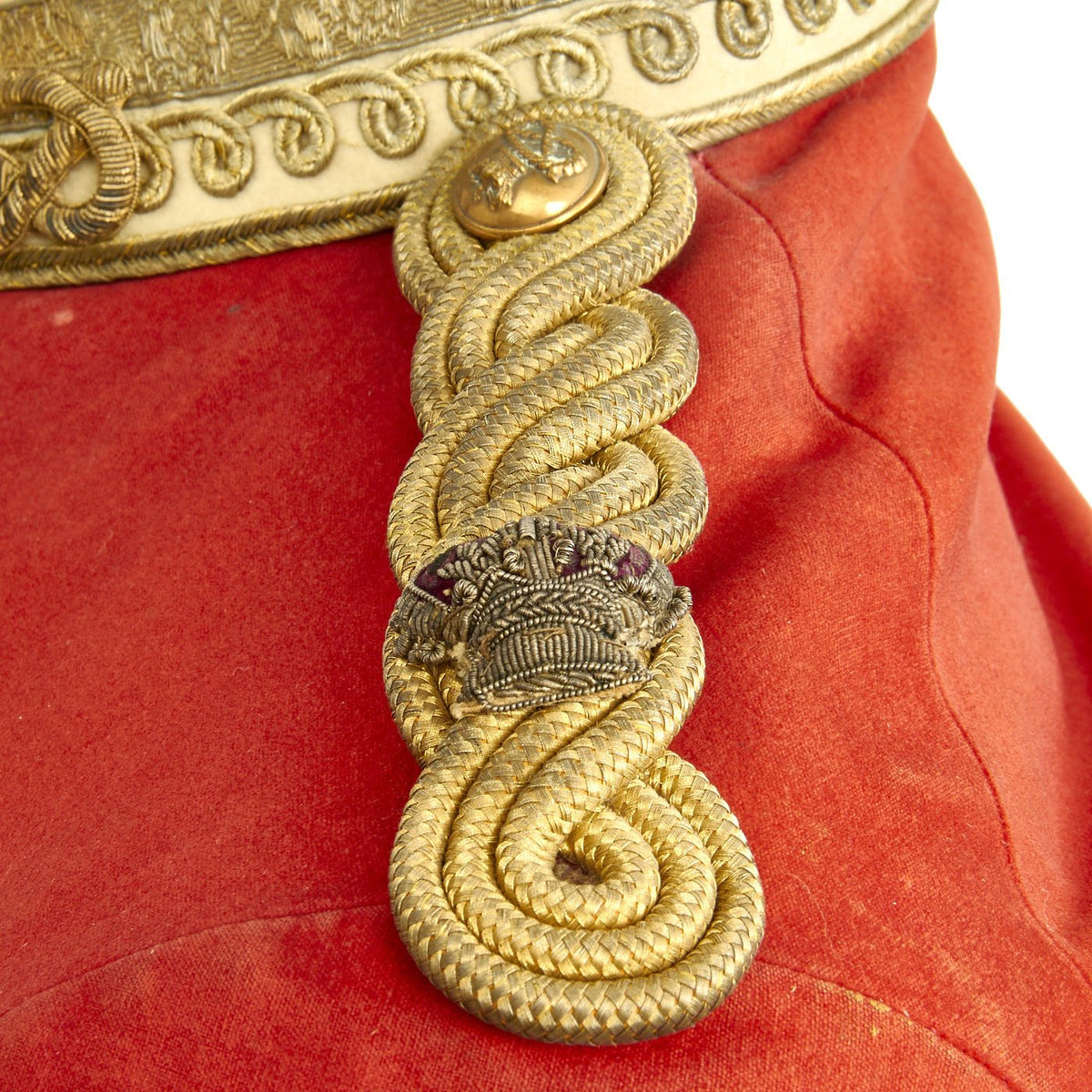Original British Victorian South Staffordshire Regiment Officer Tunic Circa 1881 – 1902 Original Items
$ 495,00 $ 148,50
Original Item: Only One Available. Dating between 1881-1902 this fine tunic is in very good condition and features original Victorian South Staffordshire Regiment gilt buttons with Queen’s Crown. Front of tunic has 8 buttons, epaulets are gilt braided with one crown indicating rank of Lieutenant. However, the cuff braiding appears to be a captains rank. Perhaps after service a star for each shoulder board was removed and never replaced. Interior lined and shows some wear especially towards the neck.
Approximate Measurements:
Collar to shoulder: 9”
Shoulder to sleeve: 24”
Shoulder to shoulder: 15”
Chest width: 16”
Waist width: 15”
Hip width: 20”
Front length: 28″
History of the South Staffordshire Regiment
The 1st Battalion (the former 38th) was sent to Egypt in 1882 as part of the British invasion of the country. On landing in Alexandria, it carried its colors through the city – this was the last occasion on which a British Army unit carried colors on active service. In 1885, the battalion traveled up the River Nile to Sudan in an unsuccessful attempt to lift the Siege of Khartoum. The battalion was subsequently involved in the defeat of Arab forces at Kirbekan.
The 1st Battalion then entered a long period of garrison duty in Gibraltar, Egypt, England and Ireland. They arrived home from Gibraltar in early February 1900. With the outbreak of the Second Boer War the previous year, the regiment was ordered to South Africa, arriving as part of the 8th Division in 1900. The battalion was mostly involved in minor skirmishes with the Boers, but suffered casualties due to disease and poor nutrition.
In 1904, the 1st South Staffords returned to the United Kingdom, being stationed in Ireland and England until 1911, when it moved to Gibraltar. While in Gibraltar, new colors were presented to the battalion by King George V on 31 January 1912. The battalion returned to South Africa in 1913.
The 2nd Battalion (the former 80th) was stationed in British India in 1881, soon moving to Tralee in Ireland, where it was involved in actions against Irish nationalists. It returned to England in 1883. It was then posted to The Curragh from 1889 to 1891, before traveling to Egypt, via Aldershot, in 1893. The battalion subsequently served in southern India and Burma until 1907, when it started a four-year posting in Pretoria, South Africa. The battalion returned to England in 1911.
The 3rd, Militia battalion, was embodied in May 1900, and disembodied in December the same year. They were again embodied in May 1901, and the following month 500 men embarked for service in South Africa during the Second Boer War. The battalion returned in July 1902.
The 4th, Militia battalion, was embodied in December 1899, and 650 men embarked in February 1900 for service in South Africa during the Second Boer War. They returned in August 1901, when they disembodied.
Fast Shipping with Professional Packaging
Thanks to our longstanding association with UPS FedEx DHL, and other major international carriers, we are able to provide a range of shipping options. Our warehouse staff is expertly trained and will wrap your products according to our exact and precise specifications. Prior to shipping, your goods will be thoroughly examined and securely secured. We ship to thousands clients each day across multiple countries. This shows how we're dedicated to be the largest retailer on the internet. Warehouses and distribution centres can be located throughout Europe as well as the USA.
Note: Orders with more than one item will be assigned a processing date depending on the item.
Before shipping before shipping, we'll conduct a thorough inspection of the items you have ordered. Today, the majority of orders will be delivered within 48 hours. The delivery time will be between 3-7 days.
Returns
The stock is dynamic and we cannot completely manage it because multiple stakeholders are involved, including our factory and warehouse. So the actual stock may alter at any time. It's possible that you may not receive your order once the order has been made.
Our policy is valid for a period of 30 days. If you don't receive the product within 30 days, we are not able to issue a refund or an exchange.
You can only return an item if it is unused and in the same state as the day you received it. You must have the item in its original packaging.
Related products
Uncategorized
Uncategorized
Uncategorized
Uncategorized
Uncategorized
Uncategorized
Uncategorized
Uncategorized
Uncategorized
Uncategorized
Uncategorized
Uncategorized
Uncategorized
Uncategorized
Uncategorized
Armoured Fighting Vehicles of the World: AFVs of World War One (Hardcover Book) New Made Items
Uncategorized
Uncategorized

